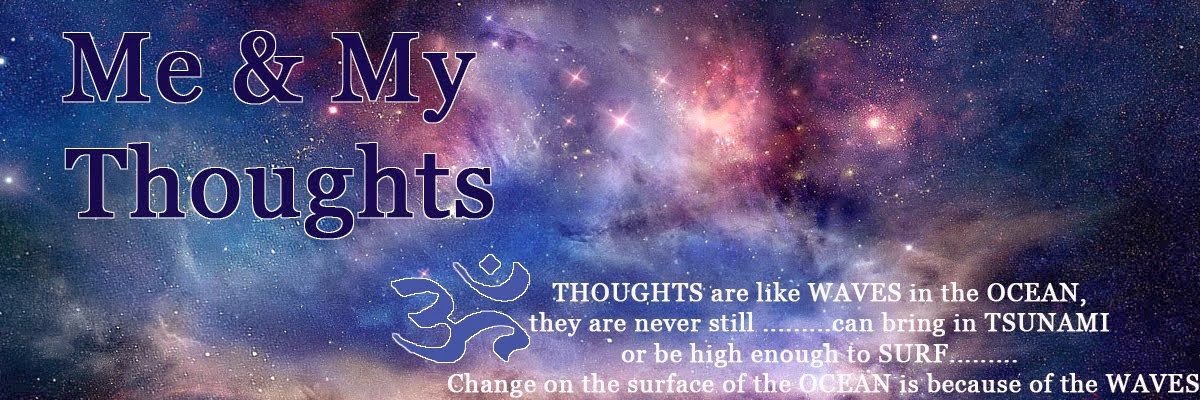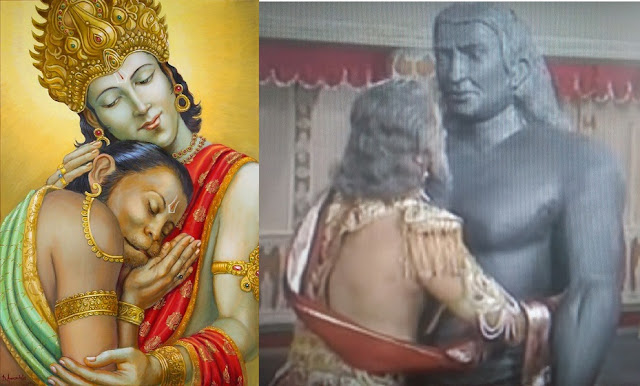By reading a few of our scriptures I have understood
that God is a manifested form of an Infinite Energy. The personification of that Infinite Energy was
required to help comprehend it in a simple way at the initially stage. What could
be the reason behind understanding God???
The purpose of everybody’s birth is to fulfil the Purusharthas (The Four Objectives of Life). The ultimate among them being Moksha. Moksha in simple words to to get back home, to the source. It is to sever the vicious cycle of birth-death-rebirth. Moksha highly depends on Karma; Karma is our action (Agama) not the resultant fruit (Prarabdha or Sanchita). And I believe that our Agama Karma can get us Moksha. Perfoming Bhakti and attaining Jnana too can be the way for Moksha.
The purpose of everybody’s birth is to fulfil the Purusharthas (The Four Objectives of Life). The ultimate among them being Moksha. Moksha in simple words to to get back home, to the source. It is to sever the vicious cycle of birth-death-rebirth. Moksha highly depends on Karma; Karma is our action (Agama) not the resultant fruit (Prarabdha or Sanchita). And I believe that our Agama Karma can get us Moksha. Perfoming Bhakti and attaining Jnana too can be the way for Moksha.
Bhakti is “to surrender” and Jnana is “to gain
Knowledge.” Bhakti is not limited to worshipping God alone and it is not
restricted to surrender only. “Bhaktavijaya” was a book my mother used to read
when we were young. The book was a translation of Mahipati’s Marathi work to
Kannada. The 300 year old literature has Soul-stirring Stories of several Saints.
In one chapter the book glorifies the importance of servitude towards parents. Pundarika
made Vithala wait as he was busy serving his parents and Vithala had no other
go but to wait standing on a brick outside the house of Pundarika. Here the importance
to serve parents is the highlight and God can wait.
God is Energy and it can only be felt like how Sun
beam is felt when it reflects on the surface of an object. When light falls on ocean,
it makes the ocean appears to be blue in colour. Light is colourless and yet it
makes the colour of the ocean blue. And when we look at the ocean at night it
is not blue, this makes us think that the light beam from the Sun is personified as it reflects
from a surface. Likewise God is formless Energy like Sunlight. We fail to understand
this Energy, so we need it to be personified into some “form” so that its nature
is perceived.
Every scripture only guides us and the ultimate
decision is ours. Even while giving the sermon in Gita, Sri
Krishna tells Arjuna, “Yatha Ichasi, Tatha Kuru” (Bhagavad Gita Chapter 18 verse
63). Sri Krishna puts the onus on Arjuna after explaining him on why he has to
fight and how he has to fight. This was to make Arjuna aware that it is his Karma
alone that matters more, as He can only guide him. So here I could understand
that even God doesn’t come between me and my Karma, all I have to do is
concentrate on the signals I receive from Him through my “Dhi” (Intellect) which
is aligned to Him always and attempt to do only the good Karmas.
I am not Edging God Out displaying my EGO and obviously I am not an atheist too. My belief is firm on my awareness that the God which the Upanishads refer to as “THAT” is an infinite Energy which is not confined to a particular REGION or in a particular
RELIGION or for a particular REASON.
I am not Edging God Out displaying my EGO and obviously I am not an atheist too. My belief is firm on my awareness that the God which the Upanishads refer to as “THAT” is an infinite Energy which is not confined to a particular REGION or in a particular
RELIGION or for a particular REASON.












